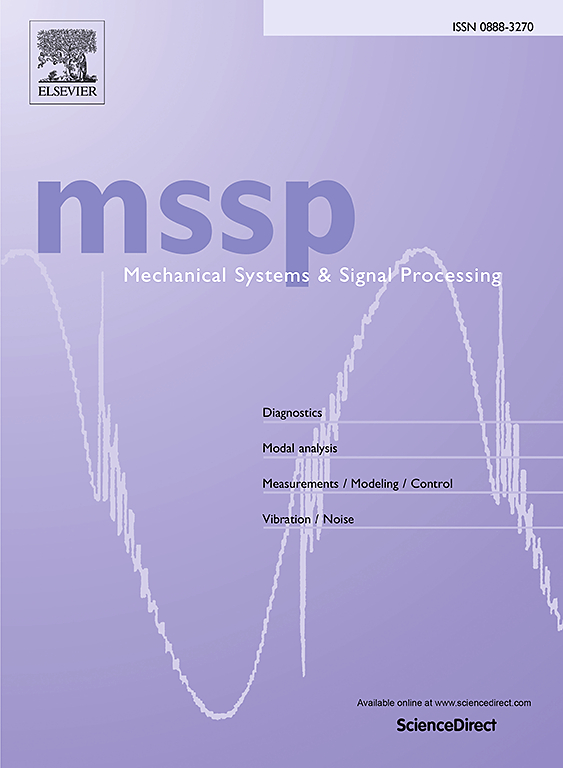基于尾迹相互作用的钝体串联结构高效双向风能收集
IF 7.9
1区 工程技术
Q1 ENGINEERING, MECHANICAL
引用次数: 0
摘要
为了解决单向风能采集器在全向场景下的局限性,本研究提出了一种基于尾迹相互作用的钝体串联结构(BWEH-WI)的高效双向风能采集器。与传统的单向和单一钝体结构不同,该系统包括串联连接的内外钝体,每个钝体具有不同的截面。利用钝体固有的气动特性和尾迹相互作用现象,实现了内外系统的双向能量收集。为了预测其动力学行为,建立了气动-机电耦合模型,利用动力学网格仿真和升力曲线分析确定了相互作用机构的气动特性。此外,还通过风洞实验分析了不同构型和间隙距离下钝体间的气动相互作用。通过实验结果与理论结果的比较,验证了数学模型的正确性。实验结果表明,在负风向下,外钝体对内钝体的影响占主导地位,是造成内钝体周期性振动的主要原因。该系统性能优异,功率比传统的单灯泡型能量采集器提高了116.4%。总的来说,本研究为尾流相互作用下实现双向能量收集提供了有价值的见解和设计指导。这些发现有助于能量收集技术的进步,对自供电智能监测系统具有重要意义。本文章由计算机程序翻译,如有差异,请以英文原文为准。
High-efficiency bi-directional wind energy harvesting based on wake interactions in bluff body tandem configuration
To address the limitation of unidirectional wind energy harvesters (WEHs) in omnidirectional scenarios, this study introduces a high-efficiency bi-directional wind energy harvester based on wake interactions in bluff body tandem configuration (BWEH-WI). Different from traditional unidirectional and single bluff body structures, the proposed system comprises both outer and inner bluff bodies connected in tandem, each with a distinct cross-section. By harnessing the inherent aerodynamic characteristics of the bluff bodies and the wake interaction phenomenon, bi-directional energy harvesting is realized for both the inner and outer systems. To predict the dynamic behaviors, a coupled aero-electro-mechanical model is developed, dynamics mesh simulations and lift curve analysis are utilized to define the aerodynamic characteristics of the interaction mechanism. Additionally, wind tunnel experiments are carried out to analyze the aerodynamic interactions between the bluff bodies by varying the configurations and gap distances. The mathematical model is validated by comparing the experimental and theoretical results, showing good agreement. The experimental results indicate that the outer bluff body has a dominant influence on the inner bluff body in the negative wind direction, which is the primary cause of the inner bluff body’s periodic vibration. The proposed system exhibits excellent performance with a significant power increase of 116.4 % compared to the conventional single bulb-shaped energy harvester. Overall, this study provides valuable insights and design guidance for achieving bi-directional energy harvesting under the influence of the wake interactions. These findings contribute to the advancement of energy harvesting technology and are of significance for self-powered smart monitoring systems.
求助全文
通过发布文献求助,成功后即可免费获取论文全文。
去求助
来源期刊

Mechanical Systems and Signal Processing
工程技术-工程:机械
CiteScore
14.80
自引率
13.10%
发文量
1183
审稿时长
5.4 months
期刊介绍:
Journal Name: Mechanical Systems and Signal Processing (MSSP)
Interdisciplinary Focus:
Mechanical, Aerospace, and Civil Engineering
Purpose:Reporting scientific advancements of the highest quality
Arising from new techniques in sensing, instrumentation, signal processing, modelling, and control of dynamic systems
 求助内容:
求助内容: 应助结果提醒方式:
应助结果提醒方式:


